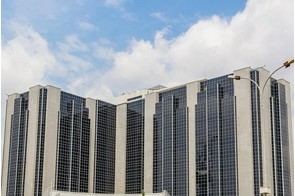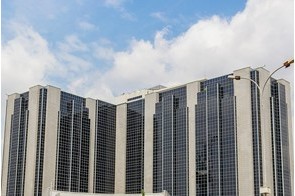Latest News
Naira falls by 30 percent as flexible interbank forex market begins

News Highlight
- The naira fell by 30 percent to close at N281.85 per dollar compared with the CBN’s previous official rate of N197 per dollar.
The Nigerian naira tumbled on Monday after trading began on the new interbank foreign exchange market, which was announced by the Central Bank of Nigeria last week.
The naira fell by 30 percent to close at N281.85 per dollar compared with the CBN’s previous official rate of N197 per dollar.
Trading had begun at a slow pace on Monday, as dealers were nervous of the new forex market structure. Reuters reported that only two deals were concluded before midday with less than $1 million exchanging hands at a rate of N255 per dollar.
However, the CBN began auctioning dollars around midday in an attempt to clear a backlog of forex orders, which amount to nearly $4 billion.
“In order to engender market confidence, ensure credible price formation and sustain the integrity of the Nigerian Inter-bank FX market, the Central Bank of Nigeria (CBN) has resolved to clear all the backlog of FX demand in the country through spot and forward settlements,” the apex bank said in a statement on Monday.
The CBN proceeded to sell $532.87 million to about 21 Nigerian banks at an auction rate ranging from N197 per dollar to N382 per dollar, according to The Cable.
Despite today’s slow trading session and sharp decline in the naira against the dollar, Moody’s has said that it backs the decision of the CBN to introduce flexibility in the forex market.
The ratings agency said although the CBN would likely continue to intervene, the new system will gradually eliminate any gap between unofficial exchange rates.
“For the sovereign, an immediate consequence of the naira depreciating is likely to be a significant increase in oil-related revenue,” Moody’s said. “A flexible exchange rate, once in operation, will pave the way for a resumption of foreign investment at an exchange rate that reflects the fundamentals of the economy – in particular, net portfolio inflows, which fell to $2.5 billion in 2015 from $13.2 billion in 2013.”
Related News
Latest Blogs
- Why electricity privatization failed (2)
- How net metering can boost embedded power generation
- Adaora Umeoji and gender in Nigerian banking leadership
- Is protest an endangered human right of Nigerians?
- Issues in using price control in Nigeria
Most Popular News
- IFC, partners back Indorama in Nigeria with $1.25 billion for fertiliser export
- CBN increases capital requirements of banks, gives 24 months for compliance
- Univercells signs MoU with FG on biopharmaceutical development in Nigeria
- Ali Pate to deliver keynote speech at NDFF 2024 Conference
- CBN settles backlog of foreign exchange obligations
- Nasdaq Dubai welcomes $600m sukuk listing by Islamic Development Bank






